| Umělec magazine 2000/2 >> The Language of Loneliness | List of all editions. | ||||||||||||
|
|||||||||||||
The Language of LonelinessUmělec magazine 2000/201.02.2000 Jazyk osamění | comics | en cs |
|||||||||||||
|
“Many posers, riddles, problems and secrets fill the pages of our Novelties Library puzzle books, we are encouraging you to dissect them all! Don’t miss out on big fun!”
Chris Ware so routinely wins awards for his design work on the Acme Novelty Library that the actual content of the stories tends to get overlooked. This is understandable: pick up any issue, and the innovation of style is easily apparent. Less obvious to the casual glance is what purpose this innovation serves. The general sense is that his work looks brilliant: whether or not it means anything...well, it’s got great design. Ware does play with form for form’s sake. He does display an almost surgical coldness towards his characters. But his work is worthy of attention beyond its instant visual impact, beyond its intricate structure. Trying to reach beyond that will entail some sacrifices. I’ll be ignoring the deeply experimental and remarkable work exhibited in issues 2, 3, 4, and 7 of The Acme Novelty Library. Thus, excluded from examination will be the potato-headed guy, Quimby the Mouse, Sparky the Cat Head, Rocket Sam, Big Tex, Rusty Brown. Also excluded from consideration are the fake ads adorning the inner covers of most issues of Acme, advertising such offerings as “Overused Meaningless Words,” “Giant Oppressive Box of Sealed Glass and Metal,” and “Things That Look Like Other Things” (“plastic that looks like wood”): ads written in the overblown style of Sears & Roebuck catalogues circa the 1920s. And out of the realm of discussion are the cut-out activities featured in most issues: instructions to form hyper-elaborate paper models of the characters or settings that appear in Acme, the miniature movie picture machine, the nouveau theatre with instructions in French. To focus on the character of Jimmy Corrigan at the exclusion of these other elements of Acme is to lose the context within which the Corrigan stories are presented—and that context is important, both for creating a mood, and because the context is really damn funny. However, the story of Jimmy Corrigan, the Smartest Kid on Earth, the most pathetic man in the world, is what drives Acme, and is certainly what keeps me buying it, and shoving it into the hands of friends and strangers. Acme’s main protagonist is unique in current literature. Jimmy Corrigan is simultaneously two characters: Jimmy Corrigan, the Smartest Kid on Earth, is a nine-year-old genius. Jimmy lives with his mother, and much of the stories’ tension revolves around the missing father. A father figure appears in the character of Superman, a visually stock superhero who acts in a wildly un-superheroic fashion. Superman also appears as God. The child Jimmy Corrigan chiefly appears in Acme #1 and 10, and in the occasional strip. Jimmy Corrigan, the adult, featured in the current storyline, issues #1, 5, 6, 8, 9, 11, 12, 13 (a storyline that will reach some form of conclusion at #14, unreleased as of yet) is shown at a variety of ages, but mostly 36. He looks much older. He lives a hilariously mundane and boring life. We are introduced to both “versions” of Jimmy in the first issue of the Acme Novelty Library. #1 opens up with a one-page story about Jimmy, boy genius, using a machine to program a stranger into being his dad. We then quickly move to the death of Jimmy Corrigan, grown-up. Jimmy goes to heaven, God is Superman, and God proceeds to address Jimmy with such remarks as, “Man, you sure were a pussy, weren’t you?” while Jimmy looks at him blankly. From there, a series of vignettes follows demonstrating how utterly empty and pathetic the grown-up Jimmy Corrigan’s life is, in contrast to the strange and fantastic adventures of boy Jimmy shrinking himself, getting cut in two, both halves growing into Jimmy Corrigans. Of vital importance to understanding any Acme story is that Jimmy Corrigan, both versions, has vivid fantasies and dreams, and those fantasies are usually presented without any narrative clue. So, the segment where the adult Jimmy pulls out a gun and shoots himself in the forehead, blowing his brains out, and then remarks, “That’s weird . . . I thought it would work,” is shown in the same style as Jimmy ineffectively baking cookies. This is important: there is no narrative difference between “reality” and “fantasy” in Acme #1 and, to a lesser extent, in the rest of Acme. We can assume that the scenes of Jimmy’s life that are boring, mundane, and end with Jimmy being humiliated are “real,” and the scenes of Jimmy as a playboy on a yacht or married are “fantasy.” But the only justification for such an assumption is intuitive feel, and in the rare examples (specifically in the middle of #8, on the cover of #11) that Chris Ware spells it out in synopsis form. It was in these synopses I learned that the Robot is a reoccurring protagonist in Jimmy Corrigan’s dreams, that the scenes of Jimmy on the farm are dreams. Until then, I’d interpreted them in the way I interpret most of the breakout parts of Acme: vignettes that advance the story, not in terms of cause and effect action, but in emotional feel and impact. I’d thought such breakout scenes to be vehicles for conveying loneliness, bitterness, fear. And, of course, learning that they are Jimmy Corrigan’s dreams doesn’t negate that interpretation. #1 is the most extreme example of this fantasy/reality blending. In the current storyline, while there are still few visual clues to alert the reader to the “status” of a scene, clues do exist. The relationship between fantasy and reality, and how the characters engage in that relationship, becomes defining. Interpreting Acme is difficult, to put it mildly. At several points, Chris Ware mocks the very sort of attempts at making sense of it, in which I’m now engaged. At the end of #11, the strip, “Comic Art 101 with Dr. James Corrigan” supplies us with two “facts”: 1. Comic art has a deep message buried within it. 2. Comic art also has fun puzzles in it, which you can find & play, instead! The given example of one such “puzzle” is to trace the number of times “peaches” comes up in Acme: “And it is much more interesting than prattling on about failed relationships, sex, and death!” Another such “puzzle” is the broken leg motif: both versions of Jimmy get broken legs, and require crutches. In neither instance is the injury shown or explained. Fun puzzles. What connection exists between Jimmy Corrigan, the Smartest Kid on Earth, and Jimmy Corrigan, the 36- year-old alienated, fearful man? They dress identically, white shirt with a black vest. They both break into fantasy without warning. Their relationship to their mother is best summed up in a quote from a strip in #2, “The phone—it rings! No doubt it is my mother, for whom I feel both resentment and an unnatural attachment, not to mention a strangely disturbing sexual tension.” [A sidenote: that strip in issue #2 is a pretty hilarious parody by Chris Ware of how a Jimmy Corrigan story works. Another line: while answering the door, Jimmy says, “It’s only ‘Superman,’ my imaginary paternal figure who will likely use a word like ‘pussy’ and tell me to ‘grow up’ while performing an act so absurd it could only be interpreted metaphorically.” Superman shoots him.] It’s tempting to say that Jimmy Corrigan the Smartest Kid on Earth is a fantasy creation of the adult Jimmy: an imaginative alter ego. The reason I lean away from this premise is that the Jimmy Corrigan boy genius stories are rarely escapist fare. In #10, the longest such story, Superman abandons Jimmy on a desert island, then when his mother and her boyfriend show up, they immediately leave and abandon him as well. Later, Superman murders a slew of kids who are dressed as superhero sidekicks: “One by one, the costumed man plunges his super-strong thumbs into the helpless pre-teens eye sockets.” Not the stuff of most day dreams. Another hypothesis would be that boy genius Jimmy is another reoccurring dream series of the adult Jimmy. Given the strong surreal qualities of the stories, the internal logic, and the persistent themes of abandonment, such a hypothesis has merit. However, unless such a correlation is drawn within the comic, that hypothesis is guesswork and little more. For now, it is perhaps best to live within the ambiguity of the relationship between the two: the way their lives both mirror and clash. The adult Jimmy is an incredibly passive figure, meekly and usually mutely going where life leads him. And life invariably leads him into humiliation, solitude, and meaningless interactions, but thus far that hasn’t driven him do anything about it. Genius Jimmy’s more active approach to life also leads him to humiliation, solitude, and meaningless interactions, but young Jimmy is somewhat shielded both by his attempts (misguided) to improve his lot, and by his naiveté. If Jimmy the boy genius is a fantasy, what’s to say that Jimmy the adult isn’t? I’ve already stated that many elements encountered in the Acme universe are vehicles to advance the story through emotional resonance. So why can’t Jimmy the adult be merely one more device towards that end? I would argue that Jimmy the adult acts as the anchor for the series, grounding it in a recognizable environment. Ware establishes the history and details of Jimmy’s life more completely than any other character. The current Jimmy Corrigan story (issues 5, 6, 8, 9, 11, 12, 13) establishes this reality. The narrative is really two parallel stories: Jimmy gets a card and an airplane ticket from his father, whom he has never met, and flies up to Michigan to meet him. Their interactions and lack of bonding make up the meat of one story. A parallel story takes place in 1893, and details the relationship (the lack thereof, really) between James, age 9, and William Corrigan, his father (Jimmy’s grandfather and great-grandfather, respectively). This second story is set against the backdrop of the World’s Columbian Expo in Chicago. Thematically, the current storyline is about father/son relations, specifically about the inability of either father and son pair to connect. Jimmy’s father is matter-of-fact in attitude towards leaving Jimmy at an early age. His lack of any sense of tact or responsibility is remarkable: when Jimmy learns he has a sister, his father says, “What, you thought you were the only mistake I ever made?” Elsewhere: “Photo albums, turkey dinners, ‘family vacations’ . . . All that’s crap as far as I’m concerned.” In a typical fashion, Jimmy just stares at him, and develops various fantasies of killing him. While Jimmy’s father abandoned him, and upon reappearance displays an almost inhuman lack of tact, there isn’t any overt hostility (although Jimmy often fantasizes such). The parallel story details James Corrigan growing up and suffering a variety of intentional abuses from his father, both physical and mental. Perhaps the principle difference between the two storylines is that James Corrigan narrates his own story, giving him the power of a voice. In #8 and 9, that narration is distant and non-specific enough to be authorial, and refers to James in the third person. In #13, it’s revealed to be the writings of James Corrigan, describing his childhood. In narrating his own story, James Corrigan introduces a new element to Acme. Jimmy’s reactions to the world’s abuses are essentially unknowable: the omnipresent blank stare. This allows the reader a certain amount of disconnection from Jimmy’s life. James Corrigan is hurt by his father’s cruelty and the cruelty of his schoolmates, and expresses his emotions in a way Jimmy doesn’t: James loses his temper, cries, and in a few rare scenes, displays happiness. And, in a way that Jimmy never seems to, James faces his pain (or at least, as this is narration, at some point in his life faced his pain), and seems able to gain some form of peace. Both stories should be considered tragic, both depict the world as a cold and often cruel place: but James’ story contains within it the possibility of catharsis. In speaking of his relationship to his father, he writes: “Of course he’d told me dozens of times that he didn’t want me around, and that he’d never asked for a child in the first place. I don’t know why I couldn’t just believe him.” Here is pain that goes to the center of being. James is able to address it directly, without having to become a robot or an imaginary farmhand, or a boy genius, for that matter. James has vivid dreams and fantasies, but at the same time is able to face the pain of his life. His ability to narrate his own story is the best indication of this. For Jimmy, fantasy is the only outlet for his emotions and desires, and fantasy is escapism. None of this would be nearly as effective if it weren’t presented in a realistic way. Ware is a master of depicting the physical environment in its modern ugliness: Jimmy’s surroundings consist of cubicle offices, fast food restaurants, empty apartments—all meticulously rendered. The environment of 1893 is recreated from the drudgery of the places James and his father live to the splendor of the World’s Columbian Expo. Ware also puts considerable effort into the interactions of his characters. #9 take place almost entirely in a hospital exam room, featuring Jimmy Corrigan’s father making boring small talk while Jimmy stares at him blankly. Ware advertises it: “Hilarity and big laughs ensue when every meaningless detail is painstakingly rendered in what is sure to be our most boring issue yet.” The issue concentrates on capturing the body language of Jimmy and his father, small gestures and motions, and the rhythms and silences of their conversation. Six panels: Jimmy’s father staring at Jimmy. / Jimmy’s father: “What?”/ Jimmy stares at him blankly. / Jimmy’s father: “What? Do you think I’m just kidding?” / Jimmy’s father looks off to the side. / Jimmy’s father: “Listen—my father never even had a mother and he turned out just fine.” This exchange takes up less than a fourth of one page, in a thirty-two-page comic. But rather than being the comic equivalent to Andy Warhol’s Empire, #9 perfectly captures the awkwardness, the forced emotion, and the artificial nature of their relationship. One of the strangest moments in the entirety of the Acme Novelty Library (and, of course, that is going up against extremely stiff competition) occurs in #12, when Jimmy’s father spies his father walking down the street, and introduces Jimmy to his grandfather, James Corrigan, now nearly a century old. “You’re his, right?” James asks. “Well, don’t let him monkey you around, y’hear?” James then goes on to complain about how he tried to buy a child’s toilet seat from a store. “It’s no damn good it’s no damn good, I’m telling you. I nearly fell straight through it into the bowl.” And that’s the fate of James Corrigan, arguably the strongest character in the series. It’s premature to draw many more conclusions from the continuing storyline. The final issue, #14, has yet to be released. In it, Jimmy may finally drop the blank stare, the escape into his fantasies, the unreal detachment from his own life. Potentially, he could scream out all of his anger and frustration at his father, return to his job in Chicago, and sweep the mailroom girl, Peggy (often seen in his fantasies of happiness), into the warm glow of the horizon at sunset. It could happen. It probably won’t. More likely, the inside covers will feature a paper cut-out activity, fake ads for something like happiness, strips with stories of black humor and sorrow. As for the story’s conclusion, it will have a deep message in it, and fun puzzles to find and play. I don’t expect an answer key, though.
01.02.2000
Recommended articles
|
|||||||||||||
|
04.02.2020 10:17
Letošní 50. ročník Art Basel přilákal celkem 93 000 návštěvníků a sběratelů z 80 zemí světa. 290 prémiových galerií představilo umělecká díla od počátku 20. století až po současnost. Hlavní sektor přehlídky, tradičně v prvním patře výstavního prostoru, představil 232 předních galerií z celého světa nabízející umění nejvyšší kvality. Veletrh ukázal vzestupný trend prodeje prostřednictvím galerií jak soukromým sbírkám, tak i institucím. Kromě hlavního veletrhu stály za návštěvu i ty přidružené: Volta, Liste a Photo Basel, k tomu doprovodné programy a výstavy v místních institucích, které kvalitou daleko přesahují hranice města tj. Kunsthalle Basel, Kunstmuseum, Tinguely muzeum nebo Fondation Beyeler.
|








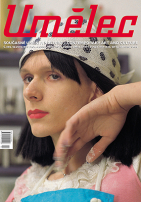

















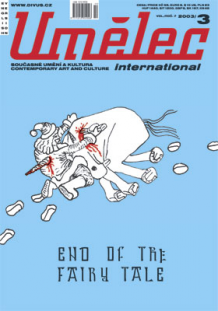




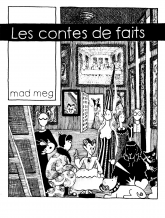
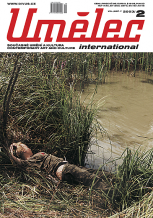
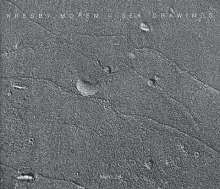
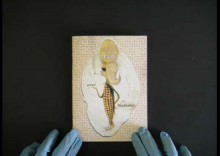


 We Are Rising National Gallery For You! Go to Kyjov by Krásná Lípa no.37.
We Are Rising National Gallery For You! Go to Kyjov by Krásná Lípa no.37.
Comments
There are currently no comments.Add new comment